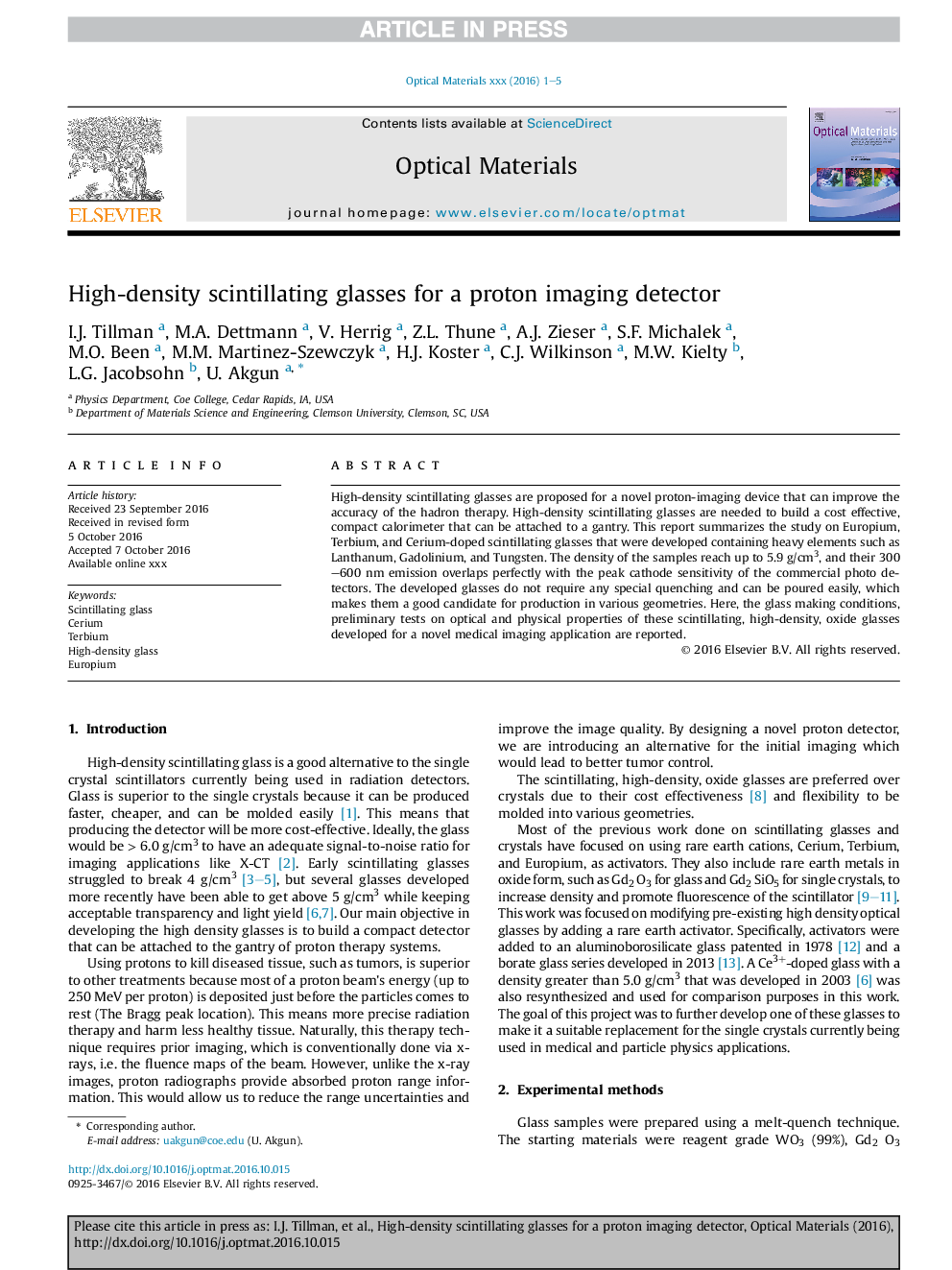| Article ID | Journal | Published Year | Pages | File Type |
|---|---|---|---|---|
| 5442766 | Optical Materials | 2017 | 5 Pages |
Abstract
High-density scintillating glasses are proposed for a novel proton-imaging device that can improve the accuracy of the hadron therapy. High-density scintillating glasses are needed to build a cost effective, compact calorimeter that can be attached to a gantry. This report summarizes the study on Europium, Terbium, and Cerium-doped scintillating glasses that were developed containing heavy elements such as Lanthanum, Gadolinium, and Tungsten. The density of the samples reach up to 5.9Â g/cm3, and their 300-600Â nm emission overlaps perfectly with the peak cathode sensitivity of the commercial photo detectors. The developed glasses do not require any special quenching and can be poured easily, which makes them a good candidate for production in various geometries. Here, the glass making conditions, preliminary tests on optical and physical properties of these scintillating, high-density, oxide glasses developed for a novel medical imaging application are reported.
Related Topics
Physical Sciences and Engineering
Materials Science
Ceramics and Composites
Authors
I.J. Tillman, M.A. Dettmann, V. Herrig, Z.L. Thune, A.J. Zieser, S.F. Michalek, M.O. Been, M.M. Martinez-Szewczyk, H.J. Koster, C.J. Wilkinson, M.W. Kielty, L.G. Jacobsohn, U. Akgun,
